Iris melanosis is a condition that affects the eyes of some cats, causing an increase in dark pigmentation on the iris.
As a cat owner, you need to recognize that this condition often appears as brown spots or patches, which can be concerning at first glance.
Iris melanosis itself is generally benign, but it has the potential to progress to a more serious condition, such as iris melanoma.
Understanding iris melanosis is crucial for maintaining your cat’s eye health.
The changes observed in your cat’s iris result from melanocytes, the cells responsible for producing pigment.
While these dark spots don’t usually pose an immediate threat, monitoring them is vital to ensure your feline friend remains healthy and happy.
With the right knowledge, you can stay informed about this condition and its nuances.
By being aware of the symptoms and potential risks, you’ll be better prepared to discuss any concerns with your veterinarian and ensure your cat receives the appropriate care they need.
Key Takeaways
- Iris melanosis appears as dark spots on the iris and is typically benign.
- Regular monitoring and veterinary consultations are essential for early detection of complications.
- Understanding the differences between iris melanosis and melanoma is crucial for your cat’s health.
Understanding Iris Melanosis
Iris melanosis is a condition affecting the colored part of a cat’s eye, characterized by increased dark pigmentation.
This section explores the defining aspects of iris melanosis, different types of iris pigmentation disorders, and how iris melanosis differs from other conditions like iris nevi.
Defining Iris Melanosis
Iris melanosis occurs when melanocytes, the pigmented cells in the iris, proliferate, leading to dark spots or patches.
These dark pigments can vary in size and usually appear as brown or black spots.
While this condition is generally considered benign, it’s important to monitor it closely, as it can occasionally progress to a malignant form known as iris melanoma.
The pigmentation can give the iris a velvety appearance, which might worry pet owners.
Regular veterinary check-ups are crucial because early detection can help distinguish between harmless melanosis and potential malignancies.
Types of Iris Pigmentation Disorders
There are various types of iris pigmentation disorders, each defined by different characteristics and causes.
Here are some key examples:
- Iris Melanosis: Increased dark pigmentation, typically benign, caused by excessive melanin production.
- Iris Nevi: These are often referred to as iris freckles, which are small, well-defined pigmented spots. Unlike melanosis, nevi are generally stable and do not change over time.
- Uveal Melanoma: This malignant condition may develop from iris melanosis and poses a significant risk to eye health. This type requires immediate veterinary attention.
Understanding these differences is crucial for ensuring proper treatment and monitoring.
Iris Melanosis Versus Iris Nevi
Distinguishing between iris melanosis and iris nevi can sometimes be challenging.
Both involve pigmentation changes in the iris, but there are key differences.
Iris melanosis presents with broader areas of hyperpigmentation, while iris nevi usually consist of smaller, concentrated spots.
Iris nevi are generally stable over time and rarely indicate any serious issues.
In contrast, iris melanosis can signify underlying changes in the eye that may warrant further examination.
Regular vet visits can help you monitor any changes in your cat’s eye and ensure any potential complications are addressed promptly.
Causes and Risk Factors

Iris melanosis in cats arises from a combination of genetic and environmental factors.
Understanding these influences can help you keep an eye on your cat’s eye health.
Genetic and Environmental Influences
Genetics play a significant role in the development of iris melanosis.
Certain breeds may be predisposed to this condition, highlighting the importance of knowing your cat’s breed background.
Environmental factors can also contribute.
For instance, prolonged exposure to sunlight may lead to increased pigmentation in the iris.
Cats that spend a lot of time outdoors are at a higher risk.
When combined, these elements can create an environment where hyperpigmentation is more likely to occur.
Monitoring your cat’s exposure to bright light can be essential in reducing potential risks.
Factors Leading to Hyperpigmentation
Several factors can result in the overproduction of melanin, leading to iris melanosis.
Chronic inflammation or irritation in the eye may trigger an increase in pigment.
In some cases, hormonal changes could also contribute, although this is less common.
Moreover, other underlying health issues might influence the pigmentation process.
Regular veterinary check-ups can help identify any concerns early on.
Being aware of your cat’s overall health and any signs of irritation is crucial.
This vigilance allows for early detection and potential intervention if iris melanosis becomes more serious.
Signs and Symptoms
Recognizing the signs and symptoms of iris melanosis in your cat is vital for timely intervention.
This condition can manifest through visible changes and may need careful monitoring to distinguish between benign and potentially harmful developments.
Identifying Visible Changes
You may first notice flat brown pigmented spots on your cat’s iris.
These spots can vary in size, and they may appear similar to freckles.
It’s common for this pigmentation to be black or dark brown.
The changes might not be accompanied by any immediate discomfort for your cat.
If you observe these spots, it’s essential to monitor for any alterations in their appearance or density.
The primary sign to watch for is a shifting color or texture.
Differentiating Benign from Malignant Signs
While iris melanosis is typically a benign condition, distinguishing it from malignant tumors like uveal melanoma is crucial.
Changes on the iris, such as the transformation from smooth to rough surfaces, could indicate a more serious issue.
If you see signs like dyscoria, which is an irregular pupil shape, or an increase in pigmentation intensity, those are red flags.
Consult with your veterinarian if you observe any of these signs.
Early detection can mean better management options.
Associated Ocular Changes
Aside from pigmentation changes, your cat may experience other ocular symptoms.
In some cases, a mild inflammation can occur, causing redness around the eye.
This reaction can be a response to irritation from the melanosis or a separate eye condition.
Additionally, if the melanosis progresses to a malignant stage, other complications might arise.
These include visual impairment or excessive tearing.
Watch for any behavioral changes in your cat, such as hesitancy to jump or play, which could indicate discomfort or vision problems.
Diagnosis and Examination
To diagnose iris melanosis in cats, a thorough examination by a veterinary ophthalmologist is essential.
Understanding the diagnostic procedures and interpreting the results is crucial for effective management.
Veterinary Ophthalmologist’s Role
When you suspect iris melanosis in your cat, visiting a veterinary ophthalmologist is a key step.
These specialists have extensive training in ocular conditions and can provide an accurate diagnosis.
During the examination, they will closely assess your cat’s eyes for any dark pigment changes.
This might include evaluating the overall health of the eye and checking for any signs of related conditions.
In some cases, they may recommend further tests to get a clearer picture of the situation.
Their expertise helps differentiate between benign iris melanosis and potential malignant conditions.
Diagnostic Procedures
Diagnostic procedures for iris melanosis involve several steps.
Initially, your veterinarian will conduct a physical examination and may check your cat’s intraocular pressure.
This can help rule out other eye conditions.
A thorough dilated examination allows the ophthalmologist to see the iris in detail.
If needed, an iris biopsy might be performed to acquire tissue samples.
This procedure allows for histopathology, which provides crucial insights into whether the pigment is benign or malignant.
Additionally, periodic monitoring with follow-up examinations every six months can help track any changes.
Interpreting Diagnostic Results
Interpreting the results of diagnostic tests is critical.
If a biopsy is performed, the histopathology report will reveal important information about the nature of the pigmentation.
Benign conditions typically require monitoring, while malignant findings may prompt immediate treatment.
Understanding whether the pigmentation is benign or indicative of iris melanoma is essential in planning your cat’s care.
Your veterinary ophthalmologist will explain the results and potential next steps based on the findings, ensuring you feel informed and empowered to make decisions for your cat’s health.
Treatment Options
Managing iris melanosis involves a variety of treatment strategies that depend on the severity of the condition.
Options range from non-invasive methods to surgical interventions, allowing for a tailored approach based on your cat’s needs.
Non-Surgical Interventions
For many cats, non-surgical interventions are often the first line of defense.
Veterinary ophthalmologists may recommend laser therapy (photocoagulation) when there’s a risk of the condition progressing toward uveal melanoma.
This focused light treatment can help to stabilize changes in the iris.
Regular monitoring is crucial.
Your veterinarian may suggest periodic check-ups to observe any developments in the pigmentation.
Changes in size or color of pigmented spots could indicate the need for further intervention.
In addition, providing a low-stress environment and a nutritious diet can support your cat’s overall well-being during treatment.
Surgical Procedures and Considerations
If iris melanosis progresses to more serious issues like uveal melanoma, surgical options may become necessary.
One possible procedure is enucleation, which involves removing the affected eye.
This is generally considered only when the tumor poses significant health risks.
Before proceeding with surgery, your veterinarian will conduct a thorough evaluation, including imaging studies, to assess the extent of the condition.
Be prepared for post-operative care, which may involve pain management and monitoring for complications.
This procedure is serious but can be life-saving when malignant transformation occurs.
Always discuss the potential risks and benefits thoroughly with your vet.
Monitoring and Managing Complications
Ongoing monitoring plays a vital role in managing iris melanosis.
You should schedule regular veterinary visits to track any changes in your cat’s eye condition.
During these visits, your veterinarian will check for signs of progression toward malignancy.
If complications arise, such as inflammation or discomfort, your vet might recommend medication or other treatments to alleviate symptoms.
It’s essential to stay vigilant for any behavioral changes in your cat that could indicate pain or distress, as these might require immediate attention.
By maintaining open communication with your veterinary team and following their advice, you can better manage your cat’s health and comfort throughout treatment.
Potential Complications
When dealing with iris melanosis in cats, it’s essential to be aware of potential complications.
While the condition itself may seem benign, it can carry risks, including malignancy, glaucoma, and retinal detachment.
Malignancy Considerations
Iris melanosis can remain benign for many years, but there is a risk that it may progress to iris melanoma.
This malignant tumor can spread to various organs, including the lymph nodes and lungs.
If you notice changes in your cat’s iris, such as increased pigmentation or irregularities, consult your veterinarian promptly.
Regular check-ups can help monitor the condition.
Early detection is crucial, as timely intervention can significantly improve the prognosis.
Keeping an eye on your cat’s eye health is key to ensuring it doesn’t lead to serious complications.
Glaucoma and Intraocular Pressure Issues
Iris melanosis can lead to glaucoma.
Glaucoma is a condition where the intraocular pressure increases, causing pain and vision loss.
Your cat may show signs of discomfort, such as squinting or rubbing its eyes.
Make sure to have your vet evaluate its eyes regularly, especially if it has been diagnosed with melanosis.
Treatment options may include medications to lower intraocular pressure or surgical interventions.
Staying proactive about your cat’s eye health can help prevent complications related to glaucoma.
Risks of Retinal Detachment
Iris melanosis can also be associated with retinal detachment, which poses a serious risk to your cat’s vision.
Retinal detachment occurs when the retina separates from its underlying tissue, leading to vision impairment or blindness.
Symptoms may include sudden changes in behavior or vision, such as bumping into objects.
If your cat shows these signs, immediate veterinary attention is crucial.
Regular monitoring of your cat’s eyes can help catch any developing issues early.
Your vet will recommend regular examinations to keep your cat’s visual health on track.
Differentiating Iris Melanosis and Melanoma
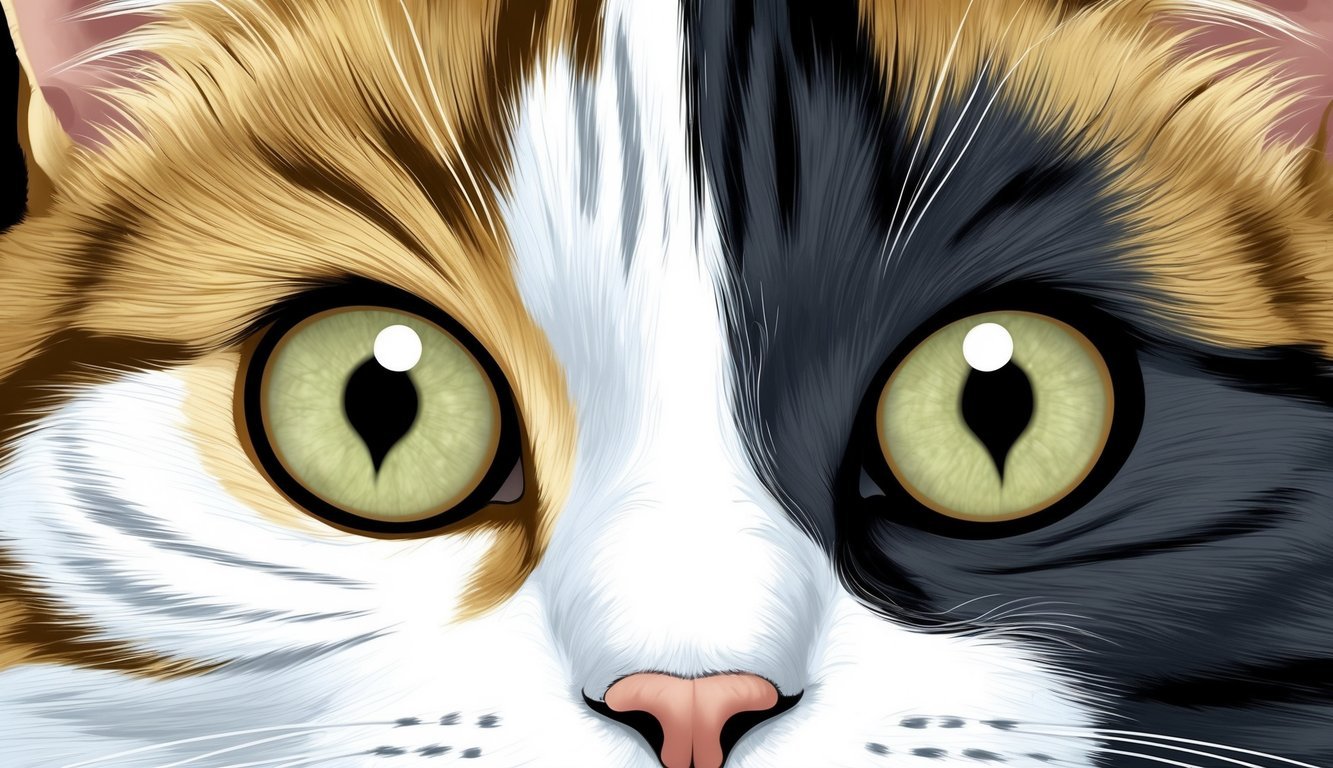
Understanding the distinction between benign iris melanosis and malignant melanoma is crucial for your cat’s eye health.
While melanosis can appear harmless, it has the potential to develop into a more serious condition.
Recognizing these differences can aid in timely intervention.
Characteristics of Benign Iris Melanosis
Iris melanosis appears as dark patches or spots on your cat’s iris, resembling freckles.
These spots typically do not cause harm and are regarded as benign.
They are often flat and can be observed without specialized tools.
Benign iris melanosis is generally stable and does not present symptoms like inflammation or pain.
Regular monitoring by a veterinarian is essential to ensure there are no changes.
Key features of benign melanosis include:
- Flat pigmentation: Typically uniform and non-raised.
- Lack of additional symptoms: No redness or swelling.
- Stability
not progress rapidly.
Close observation helps ensure that these patches remain harmless, allowing you to keep your cat’s ocular health in check.
When Iris Melanosis Becomes Malignant
In some instances, iris melanosis can evolve into iris melanoma, a type of uveal melanoma.
This transformation may lead to cancerous cells developing that can be detrimental to your cat’s health.
Indicators that benign melanosis has become malignant may include:
- Changes in shape or size: If the spots become irregular or start to enlarge.
- Presence of elevated lesions: This could signal a transition to malignancy.
- Accompanying symptoms: Symptoms like swelling, redness, or discomfort warrant immediate veterinary attention.
Early identification can help manage the condition before it progresses to metastatic disease, where cancer cells spread beyond the iris.
Regular veterinary check-ups are vital to monitor the status of any iris pigmentation and ensure your cat remains healthy.
Prognosis and Survival
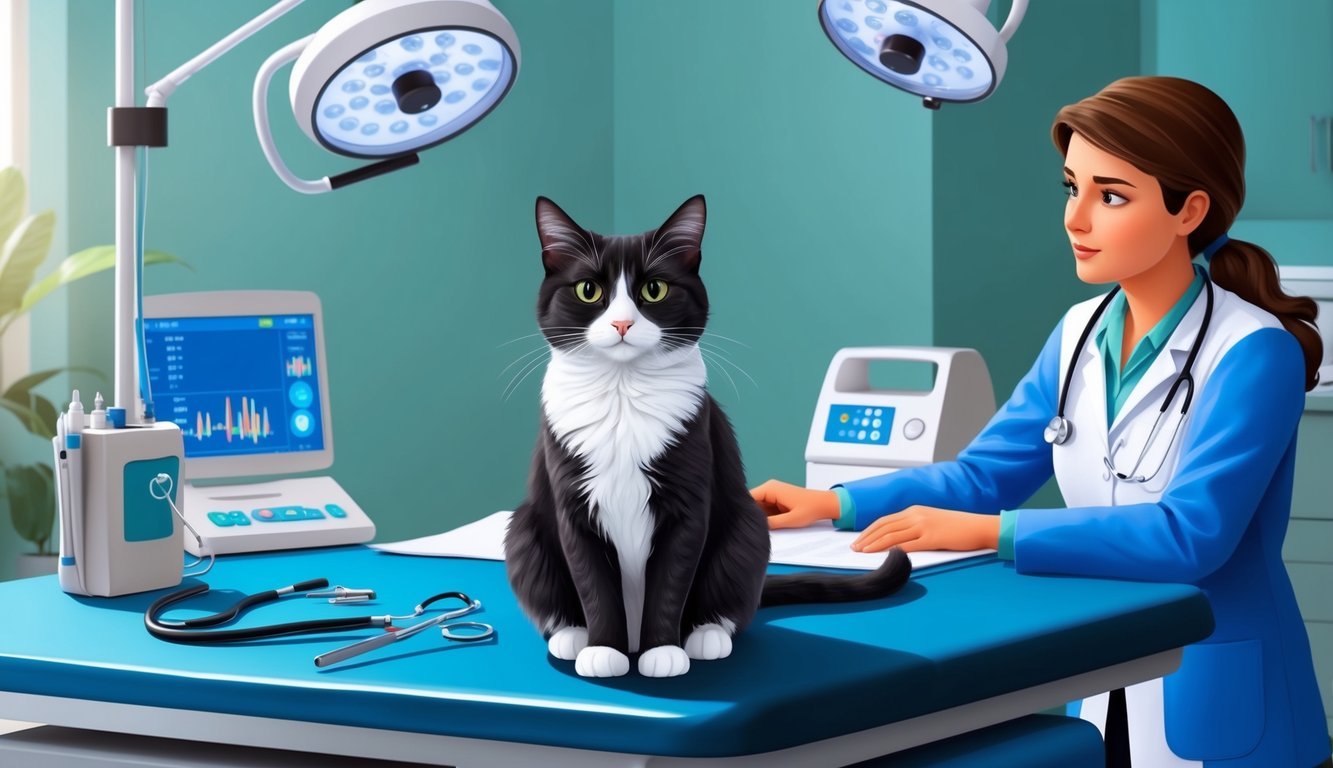
When dealing with iris melanosis in cats, understanding the prognosis and survival statistics is crucial.
This condition varies from benign pigment changes to potential malignancies.
Knowledge of survival rates and quality of life considerations helps you make informed decisions about your cat’s care.
Survival Rates and Statistics
Survival rates for cats with iris melanosis typically remain high, especially when monitored.
According to veterinary literature, most cases are benign.
If your cat’s condition remains stable and does not progress to malignant melanoma, the prognosis can be quite favorable.
Specific statistics can be hard to come by, but studies suggest that cats with iris melanosis live a full life expectancy, usually around 15 years or more, given that they receive regular veterinary check-ups.
Early detection and monitoring play key roles in ensuring your cat’s well-being.
Quality of Life Considerations
Quality of life is an essential aspect of managing iris melanosis.
Most cats do not show significant symptoms or discomfort from the condition itself.
You may notice a patch of pigment on your cat’s iris, but it typically does not affect their vision or behavior.
Regular veterinary examinations can help monitor changes.
If your vet identifies any progression towards malignant melanoma, you might need to discuss treatment options.
Remember that maintaining a stress-free environment and providing enriching activities supports your cat’s overall well-being.
Always consult your veterinarian for tailored advice suited to your cat’s individual needs.
Support and Management
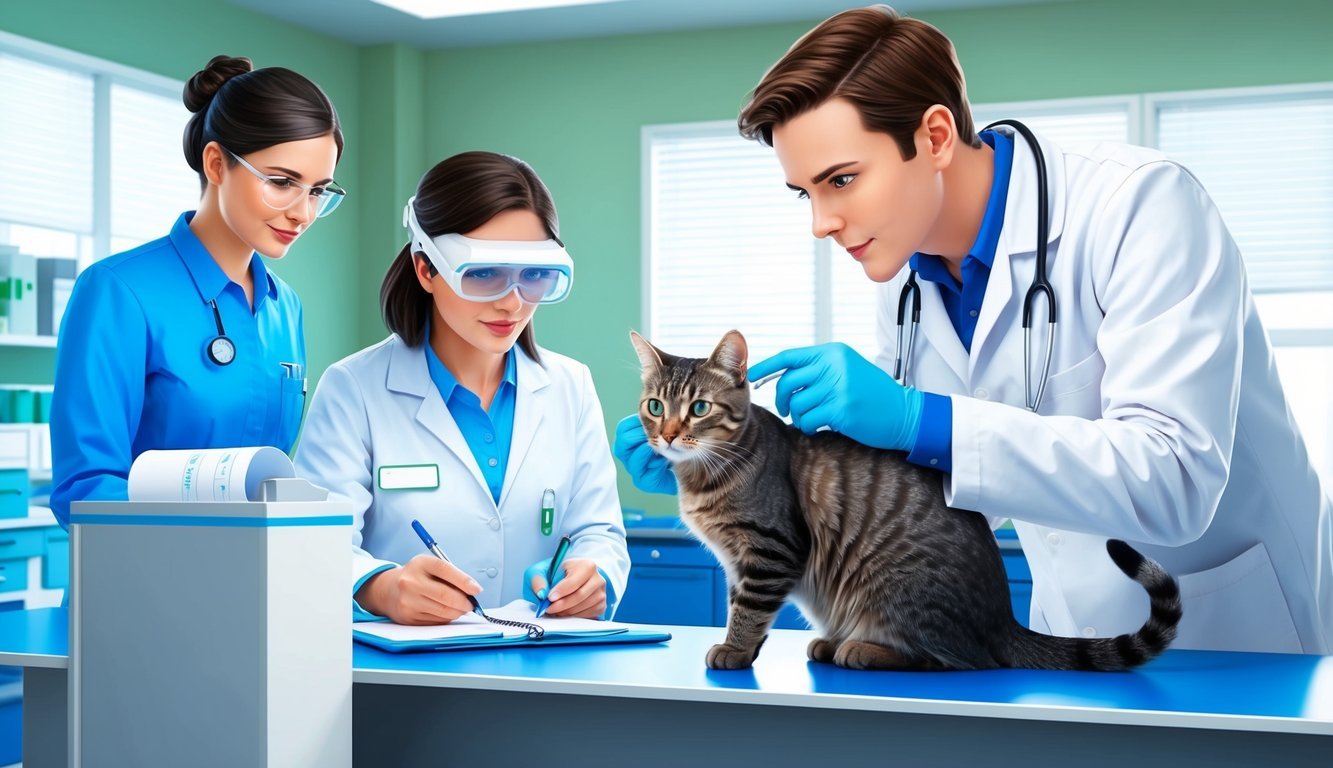
Managing iris melanosis in your cat involves ongoing support and attention to their health.
This benign condition calls for a proactive approach to ensure that any changes are monitored effectively.
Below are key considerations for aftercare and long-term management.
Aftercare Post-Treatment
After any treatment, follow your veterinarian’s instructions for care.
Your cat may need regular check-ups to monitor the iris for changes.
Pay close attention to their eyes for any new spots or alterations.
Consider maintaining a diary to record observations, such as changes in appearance or behavior.
Ensure your cat receives appropriate medication if prescribed.
Provide a calm environment that minimizes stress.
Cats recover better in familiar settings.
You may also want to restrict outdoor access to prevent exposure to potential irritants.
Long-Term Management of Iris Melanosis
Long-term management is crucial for monitoring this feline-specific condition.
Schedule frequent veterinary visits, especially if your cat shows any changes in iris pigmentation.
Regular examinations can help catch any potential progression towards malignancy early.
Create a health checklist that includes:
- Eye examinations every 6–12 months
- Keeping an eye on behavior, like squinting or irritation
- Dietary considerations for overall eye health
While iris melanosis itself is benign, remaining vigilant is essential.
Maintain open communication with your vet about any concerns, and they can guide you on supportive treatments as needed.
With the right management, your cat can lead a comfortable life.
Advanced Diagnostics and Monitoring
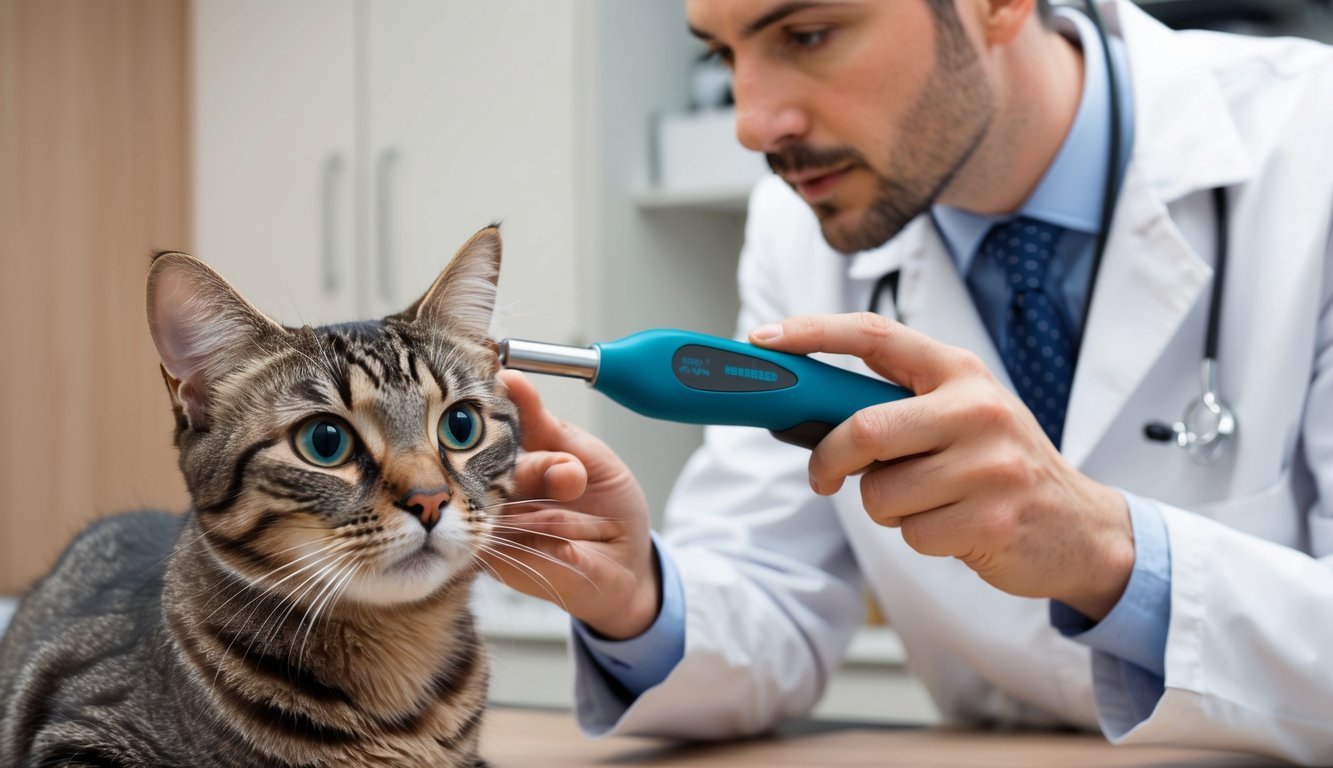
Monitoring iris melanosis in your cat is crucial to differentiate between benign changes and potential malignancies.
Advanced diagnostic techniques and regular follow-up can help ensure your cat’s eye health remains intact.
Imaging Techniques
Imaging plays a vital role in assessing iris melanosis.
Your veterinarian may recommend thoracic radiographs to check for any signs of metastasis, especially if there’s a concern about malignancy.
These X-rays help visualize the lungs and identify any irregularities.
An abdominal ultrasound can also be performed to evaluate the internal organs for potential cancer spread.
This non-invasive procedure provides clear images, allowing for a thorough assessment.
Additionally, eye examinations are essential.
They include evaluating the pupillary light reflexes to assess overall eye function.
Changes in this reflex can indicate complications such as uveitis, which may arise alongside iris melanosis.
Follow-Up Procedures
Regular follow-ups are important for monitoring changes in the iris.
Your veterinarian will want to track the size, color, and appearance of any dark spots over time.
Keeping a log of these changes will assist in identifying potential malignancy.
During follow-ups, ocular pressure tests may be performed to rule out secondary complications like glaucoma.
It’s also important to discuss any behavioral changes you notice in your cat, as these can sometimes indicate discomfort or vision issues.
If needed, your vet might recommend more advanced diagnostics, such as a referral to a veterinary ophthalmologist.
This collaboration can help determine if further treatment or monitoring is necessary based on your cat’s specific situation.
Frequently Asked Questions
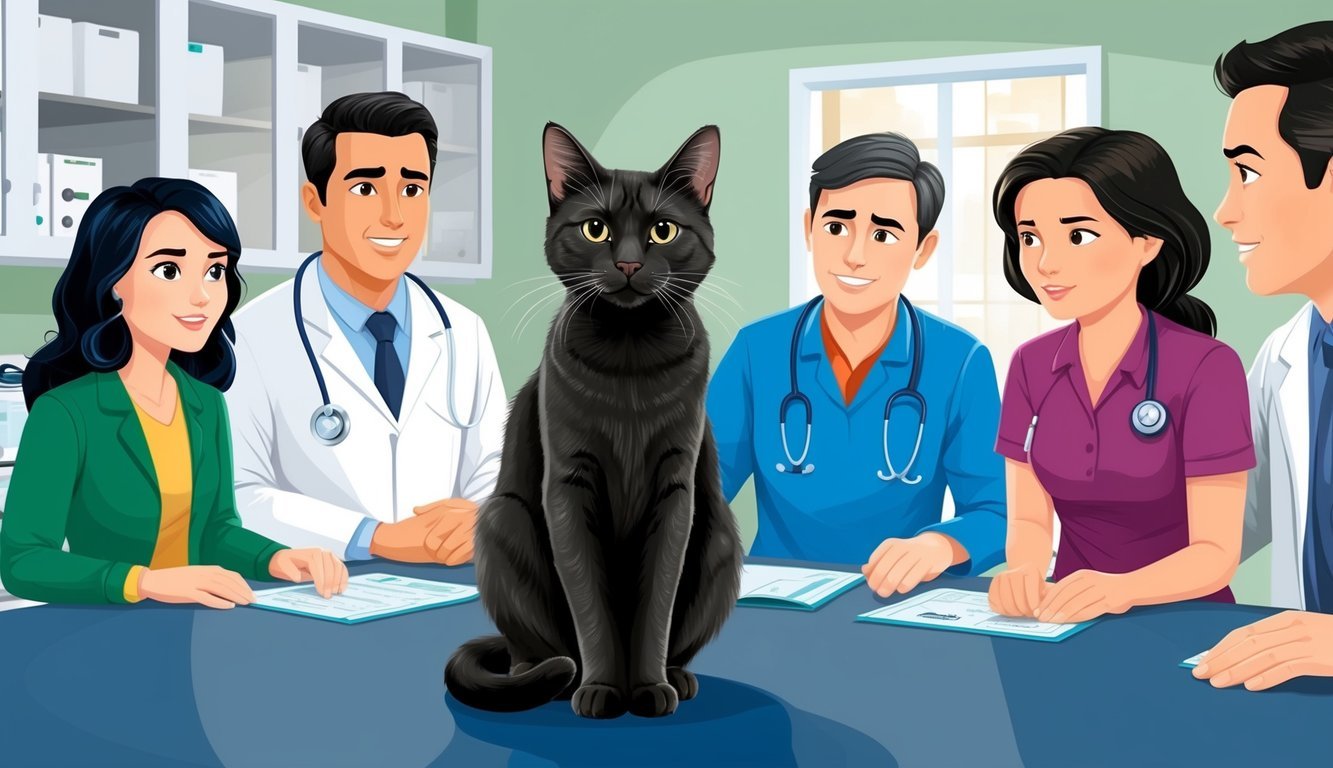
Understanding iris melanosis can help you care for your cat better.
Here are some common questions about the signs, risks, treatments, and implications of this condition.
What are the common symptoms indicating a cat might have iris melanosis?
You may notice dark spots or patches on your cat’s iris, which are signs of iris melanosis.
These patches can appear as small, flat freckles.
Your cat might not show any behavioral changes, as this condition is often benign.
Can iris melanosis lead to more serious conditions in cats?
While iris melanosis itself is usually benign, there are some risks involved.
It can lead to complications like glaucoma or retinal detachment.
Monitoring the condition with your vet is important to prevent potential issues.
How is iris melanosis typically treated in feline patients?
Treatment for iris melanosis usually isn’t necessary unless complications develop.
Your vet may recommend regular check-ups to monitor the condition.
If it leads to more serious problems, like glaucoma, specific treatments may be required.
What’s the difference between iris melanoma and melanosis in cats?
Iris melanoma is a malignant tumor that can develop within the eye, while iris melanosis refers to benign hyperpigmentation.
It’s crucial to distinguish between the two, as melanoma poses more significant health risks.
Does the presence of iris melanosis affect the life expectancy of cats?
In most cases, iris melanosis does not negatively impact a cat’s life expectancy.
Since the condition is typically benign, many cats live long, healthy lives with it.
Regular veterinary visits can help monitor any changes.
Are there any signs to watch for that indicate iris melanosis is progressing?
If you notice changes in the size, shape, or color of the dark spots on your cat’s iris, consult your vet.
Signs of discomfort, such as squinting or excessive tearing, may also indicate progression.

